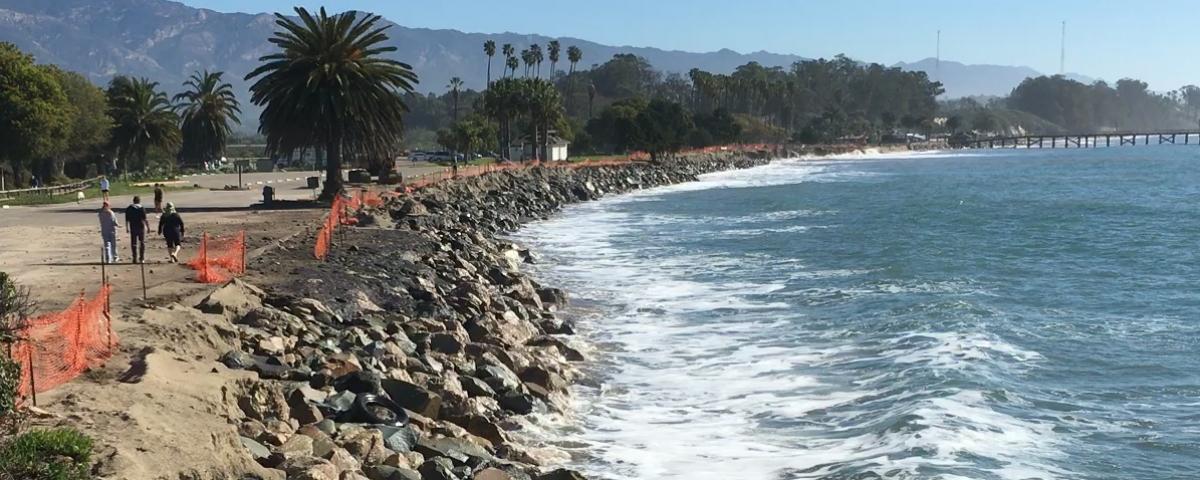Climate change will affect California’s sandy beaches. Here are the main impacts:
Sea Level Rise – As the planet warms, seawater will expand, ice sheets will melt and water levels will rise, flooding beaches. Normally, beaches might naturally migrate inland in response, but oftentimes beaches are trapped between rising seas and structures like buildings and roads, leaving them nowhere to go.
Storms – Climate change isn’t expected to increase the number or strength of storms in California. Still, a normal storm event will likely cause greater damage to the shoreline because sea level rise will cause the water line to be higher.
Sand and Erosion – Changes in rainfall may alter when and how much sediment washes down rivers to the sea, and changes in sea level, seawater temperature, and other ocean dynamics may change how much the ocean contributes to the erosion of beaches. Studies that model these complicated processes have shown that climate change may alter where “erosion hotspots” occur along the California coastline
Beach inhabitants – Many beach critters will lose their habitats as beaches become smaller. Critters that live on the upper, drier parts of the beach will be especially threatened as sea levels rise.
Some communities are using smart solutions to the challenges of climate change. Read about some of these climate adaptation success stories.
From the Experts

Dan Cayan
Climate Researcher
Scripps Institution of Oceanography
"Over the next century, we expect to see warming on average here along the coast could reach 3-5º F above todays levels. How much it warms depends on how much we load the atmosphere with greenhouse gases… so that the future in terms of the degree of climate change is essentially a set of choices that global society is making and will feel for the next several decades."


